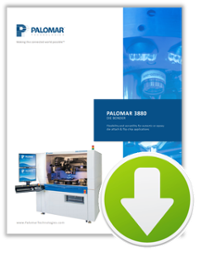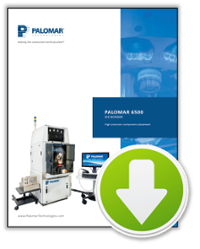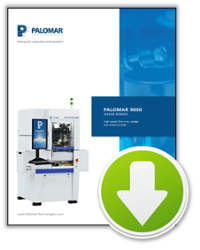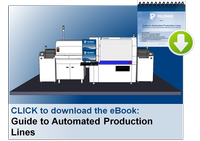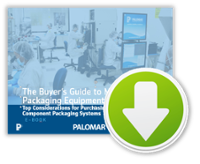We have the privilege and opportunity to work with customers who are ready to make the leap from a manual production environment to a fully automatic solution. Although initially the concept may seem straight-forward, often there can be a wide array of challenges that need to be addressed.
Manual Operator to Automatic System
One of the big differences is that you are removing the operator from the equation. Often the operators have years of experience and know-how to compensate for variances in the processes. For example, this may include realigning parts to  compensate for previous misalignments, or compensating on the next dot of epoxy when the previous dot was too large or small. An example in wire bonding could be when increasing the bond time or force to compensate for changes in the bonding surfaces. Whenever we hear the words, “then the operator tweaks this”, we have to ask ourselves: is this something the automatic system can deal with?
compensate for previous misalignments, or compensating on the next dot of epoxy when the previous dot was too large or small. An example in wire bonding could be when increasing the bond time or force to compensate for changes in the bonding surfaces. Whenever we hear the words, “then the operator tweaks this”, we have to ask ourselves: is this something the automatic system can deal with?
In order to do this, the automatic system must be repeatable and accurate. However, even more importantly, it has to be able to compensate for variances in the parts or the process. For example, the fully-automatic 8000i Wire Bonder and the 9000 Wedge Bonder have deformation monitoring capability that allows the system to monitor the bond deformation to insure the desired bond was achieved. They also have Adaptive Bond Deformation™ that allows the system to compensate for variances in the bond surface and adjust the bond parameters on-the-fly. In regards to die bond, there are lots of tools available for compensation of process variables. For example, our 3880 Die Bonder can place the next die relative to the previously placed die; in other cases using complex algorithms, it can place the die in a position based on the average position of multiple pre-placed die.
Manual to Automatic: Components and Parts
Another challenge that often arises involves presenting the components and fixturing the parts from the manual systems to the automatic solution. In many cases, due to our equipment’s large work areas, we can either use existing manual tooling or use our variety of custom stages to present multiple parts to the system. This reduces the need for loading/unloading or, with the use of automatic handling and feeding systems, can eliminate the need for operator interaction entirely. There is also the challenge when the operator pours the parts out of a vial onto a work  surface, and then uses tweezers or a vacuum pen to pick and place. However, with the new VisionPilot® with Radar Referencing®, we only have to get the part in a singular location. Using the example of a waffle pack, the 3880 can find the component, preform, and/or die in any orientation. You also have the capability of auto-focus and, if required, can even flip the device over automatically or use a look-up camera.
surface, and then uses tweezers or a vacuum pen to pick and place. However, with the new VisionPilot® with Radar Referencing®, we only have to get the part in a singular location. Using the example of a waffle pack, the 3880 can find the component, preform, and/or die in any orientation. You also have the capability of auto-focus and, if required, can even flip the device over automatically or use a look-up camera.
In short, there are many tools on our automatic solutions that are designed to compensate for variances to the process that the operator in the manual setting addresses.
Download these resources for more information on automating your process:
|
3880 Die Bonder |
||
VisionPilot Data Sheet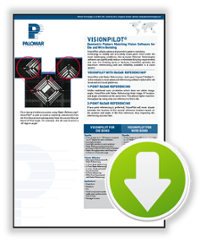 |
Guide to Automated Production Lines eBook |
Buyer's Guide to Microelectronics Packaging Equipment |
----
Dale Perry
Regional Account Manager, Eastern Americas
Palomar Technologies, Inc.
